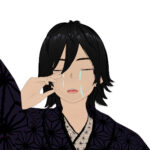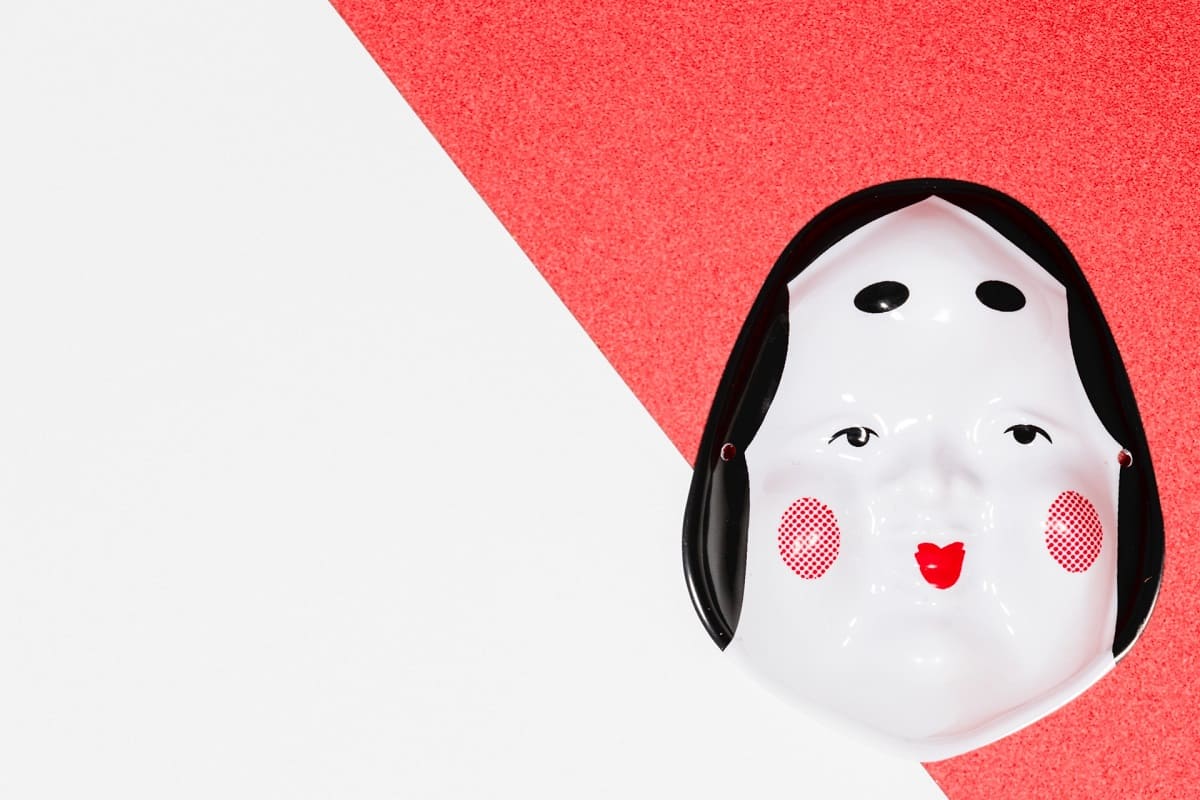When you hear the name Okame, what comes to mind?
Known as a symbol of good fortune and harmony, Okame is deeply embedded in Japanese culture. Beyond her cheerful appearance lies a touching story of sacrifice and wisdom.
In 1227, during the construction of Kyoto’s Senbon Shakado (Daikaku-ji), Okame played a pivotal role in saving her husband from despair after a significant failure. Her ingenuity and selflessness ensured the temple’s completion, leaving behind a legacy that continues to inspire. This article delves into Okame’s origins, cultural role, and her bittersweet tale of love and sacrifice.
What is Okame?

I see her face on some Nato products as well!
The Origins and History of Okame

Okame has been part of Japanese folklore since a long time ago. Her round, cheerful face and serene expression symbolize happiness and prosperity, making her a beloved figure in traditional Japanese society.
Is Okame a Deity?

Okame is not a deity in the strict sense but rather a symbol of good fortune, family harmony, and abundance. She embodies maternal qualities and is venerated for her ability to bring peace and joy to communities.
Okame’s Role in Japanese Culture
In Japanese tradition, Okame is a popular symbol in festivals and as a lucky charm. Her gentle smile represents the ideal of a harmonious household, making her a key figure in both private and communal celebrations.

I used to enjoy “Fukuwarai” with Okame face.

Fukuwarai is a traditional Japanese New Year’s game. Players are blindfolded and try to place facial parts such as eyes, nose, and mouth onto the outline of a face drawn on paper or cloth. Because it’s challenging to position the parts correctly, the resulting faces often turn out amusingly mismatched, creating lots of laughter among participants. The game embodies the saying, “Laughter brings good fortune,” making it a fun and auspicious way to celebrate the New Year with family and friends.
About the Okame Mask
The Design and Features of Okame Masks

Okame masks are characterized by their soft, round faces, small mouths, and rosy cheeks. The gentle and inviting expression conveys warmth and joy, making them a staple in traditional dances and performances.
Why Okame Masks are Considered Lucky

Okame masks are thought to bring prosperity and peace to homes and businesses. Their design reflects ideals of happiness and balance, making them treasured as talismans of good fortune.
The Difference Between Okame and Hyottoko Masks

While Okame’s mask exudes elegance and calm, Hyottoko’s mask is comical and exaggerated. Together, they represent the balance of opposites, often depicted as complementary figures symbolizing harmony and unity.
The Tragic Story of Okame

I’m very curious about her story. I bet you guys are as well!
The Tale of Senbon Shakado

In 1227, the construction of Kyoto’s Senbon Shakado temple was underway, led by Okame’s husband, a skilled master carpenter. Despite his expertise, he made a rare and significant mistake that jeopardized the project. Deeply troubled, he struggled to find a solution. Recognizing his distress, Okame offered her wisdom and proposed a clever solution to overcome the construction challenge. Her guidance was instrumental in ensuring the successful completion of the temple.
Okame’s Wisdom and Sacrifice

Although Okame’s contribution was crucial, she feared that public recognition of her role might tarnish her husband’s reputation as the master builder. To protect his honor, she made the ultimate sacrifice and took her own life. Her selflessness ensured her husband’s legacy, while immortalizing her own story in Japanese culture.

Why…Okame…

Yes! … Why!
The Lessons of the Okame Legend

Okame’s story exemplifies the virtues of love, trust, and sacrifice. Her tale is a poignant reminder of the strength found in unity and mutual support, values deeply embedded in Japanese culture. Today, her legacy is honored at the Okame Mound near Senbon Shakado, where her contribution to the temple’s history is remembered.
The Relationship Between Okame and Hyottoko
Representing Marital Harmony

Okame and Hyottoko are often depicted as a pair, symbolizing the ideal relationship between partners. Okame’s wisdom and gentle demeanor balance Hyottoko’s humor and vitality, representing harmony in marriage.
Symbolizing Yin and Yang(陰陽)

Okame represents “yang” with her calm and nurturing presence, while Hyottoko embodies “yin” with his playful and lively character. Together, they symbolize balance and unity in families and communities.
Okame and Hyottoko in Japanese Festivals

The pair frequently appears in festivals, delighting audiences with their symbolic dances and playful antics. Their performances are seen as blessings for prosperity and happiness.

If you are interested in Hyottoko,
check the link below!
Okame Q&A
- QWhat is the Okame Mound at Senbon Shakado?
- A
The Okame Mound, located at Kyoto’s Senbon Shakado temple, is a memorial honoring Okame’s sacrifice and wisdom. Visitors come to pay respects and learn about her inspiring story.
- QWhy are Okame and Hyottoko paired together?
- A
The two figures symbolize harmony and marital bliss. Together, they represent complementary qualities that foster happiness and balance in relationships.
Conclusion
Okame is a cherished symbol in Japanese culture, embodying happiness, harmony, and selflessness. Her touching story of wisdom and sacrifice at Senbon Shakado is a testament to her enduring legacy.
As a pair with Hyottoko, she represents the ideal balance in relationships, making her an enduring figure in both traditional and modern Japan. Exploring Okame’s story offers a deeper appreciation for the values she represents—values that continue to inspire across generations.

I didn’t know about Okame so much.
So I learned a lot!
Whether as a lucky charm, a festival favorite, or a game item, Hyottoko embodies the enduring power of humor and tradition in Japanese culture. Discover Hyottoko, and you’ll gain a deeper appreciation for Japan’s unique blend of the past and present.

If you are interested in Japanese culture, you may love these games!
Let’s play!

Yes! Let’s play NIOH games!





Comments